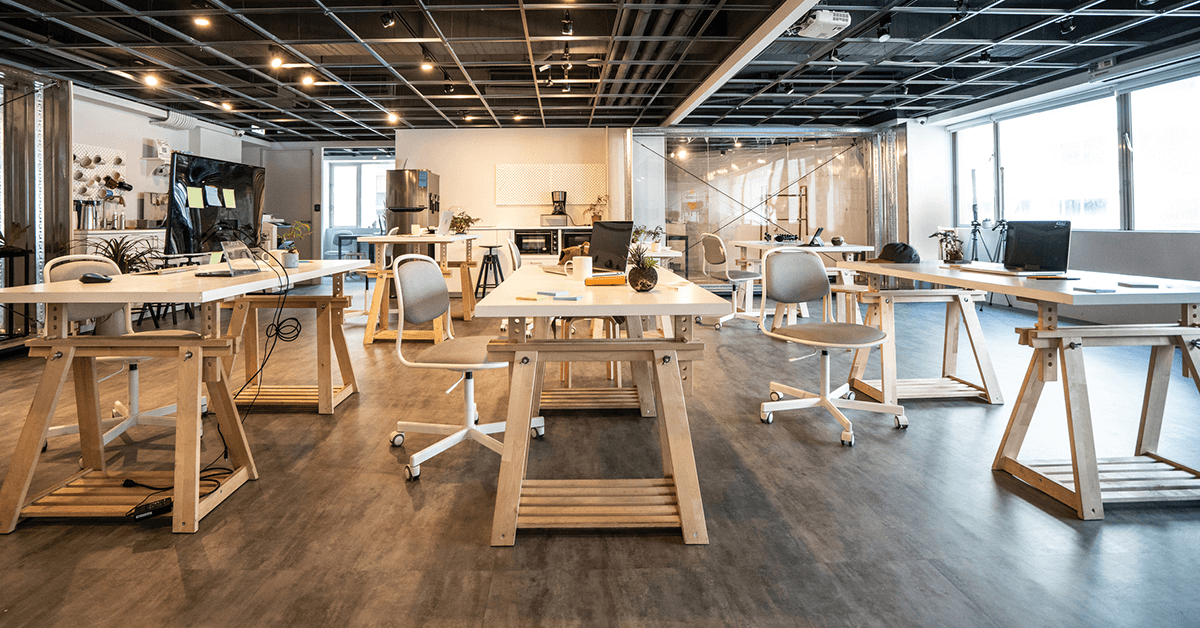
Working from home could change the look of multifamily spaces
An overwhelming majority of people are working from home as part of the social distancing requirements related to COVID-19.
That’s not a surprise.
What may be surprising, though, is how many of them will still be working from home once the pandemic finally subsides.
With businesses finding they can operate well with a majority, if not all, of their employees working from home, more opportunities for remote work could well arise as part of a “new normal” once COVID-19 is no longer at the forefront of conversation.
And with that, changes could come to people’s homes and in how they work remotely.
While some individuals may look to buy a larger home than they may have had before COVID-19, in an effort to have a designated office space in their house, others who live in apartment or condominium complexes could be more interested in shared working spaces in their building so they don’t feel cramped in their living space all day.
This surge in remote work has many in the multifamily housing community wondering if this will bring a permanent change to the development of multifamily housing for the future.
According to a story first published on Bisnow, a Colliers survey conducted at the end of March found that 82% of people globally would like to work from home, after the pandemic ends, at least one day a week after experiencing remote work during the virus outbreak.
With coworking spaces already on the radar as an amenity for developers prior to the pandemic, the novel idea of including them in development plans could quickly become standard.
“I think we’ll continue to see the expansion of coworking spaces within multifamily projects”, Ben Krasnow, managing director for Crescent Communities told Bisnow. “I think we’ll see the size of coworking spaces likely increase within projects, and the design will be catered more to, as I call it, the digital nomads, or people who are able to work remotely digitally and are not bound by any specific location.”
And although these designs already existed in a pre-COVID world, there is a good chance that they will be updated further and offer more options than just a shared workspace with some desks.
The most important aspect of any co-working environment is to ensure it is wired with the highest speed and largest bandwidth internet.
However, with the potential for more people working from home, this internet can’t just be wired in the co-working areas, but likely will have to be provided throughout the entire complex.
Additionally, the old-timey concept of phone booths may be brought back. Not with a pay phone attached to the wall, but to provide a private area for business conversations to take place without disturbing other people working in the shared space.
Universe Holdings CEO Henry Manoucheri told Bisnow that these co-working plans can also be developed in existing complexes and that his company is already discussing plans to do that by expanding existing units to accommodate more remote workers.
“As we renovate our units and find properties we want to buy, we want to be very cognizant of creating an office or nice comfortable workspace inside their units,” he said.
Among the options for expanding individual units, or developing creative layouts for new buildings, could be to create home office space by removing a closet or stacking washers and dryers to make a more streamlined laundry space to create more room for an office.
Another possibility is the expansion of outdoor spaces, that allow workers to be able to bring their laptop or tablet into a comfortable outdoor environment to escape the doldrums of working in the same indoor space that they live.
This is also likely to be a desirable option as without commutes or social interaction with co-workers, people are going to want to find a creative way to still experience “going out” the door to go to work. And there’s also the joy of idle chatter with others that has historically taken place in break rooms, while waiting to use the photocopier or when gathering around water coolers.
These outdoor spaces may also include sections that can be used for exercise, so that lunch breaks could be a time to get in a quick workout or even some yoga.
Even a subtle change, like decorating stairwells with different lighting, could promote wellness as residents could choose to use the stairs, rather than take the elevator when walking from their residence to their workspace in the same building.
Hord Coplan Macht principal Chris Harvey told Bisnow that these stairway improvements were an added element in a multifamily project his company partnered in development with High Street Residential in Pittsburgh.
“Simple things like that can change the way people use the building for the better,” he said.
Time to Focus on Affordable Housing
Taxes on real estate are not the answer. Sign the petition calling on Congress to address our country’s housing shortage.





